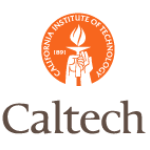- 産業:
- Number of terms: 3726
- Number of blossaries: 0
- Company Profile:
Temperature measured on the Kelvin scale: 0 Kelvin = -273.15 degree Celsius. Absolute temperature is directly related to (kinetic) energy via the equation E = kBT, where kB is Boltzmann's constant. So, a temperature of 0 K corresponds to zero energy, and room temperature, 300 K = 27 degree, corresponds to an energy of 0.025 eV.
Industry:Astronomy
The lowest possible temperature, attained when a system is at its minimum possible energy. The Kelvin temperature scale sets its zero point at absolute zero (-273.15 degree on the Celsius scale, and -434.07 degree on the Fahrenheit scale.)
Industry:Astronomy
a general concept formed by extracting common features from specific examples
Industry:Astronomy
1) A spiral galaxy (kS5 in Morgan's classification) in the Local Group, about 650-700 kpc distant (MV = -21), visible to the naked eye as a fuzzy patch in the constellation of Andromeda. Total mass about 3.1 × 1011 Msun ; i = 77? heliocentric velocity - 180 km s-1. Its nucleus exhibits noncircular gas motions. It is similar to but slightly larger than our Galaxy.
2) Major spiral galaxy, 2.2 million light-years from Earth. Gravitationally bound to the Milky Way with which it shares membership in the Local Group, it is currently approaching us, rather than receding as is the case for most galaxies.
3) The largest galaxy in the Local Group. Also known as the Great Spiral and M31. It is about one and a half times the size of our own galaxy, and contains at least 300 globular clusters. Two smaller, elliptical galaxies (M32 and NGC 205) lie close to it.
4) The largest member of the local group. It is a giant spiral galaxy that lies 2.4 million light-years away.
Industry:Astronomy
Dwarf spheroidal galaxy in the Andromeda subgroup of the Local Group. It is among the intrinsically faintest members of the Local Group.
Industry:Astronomy
Dwarf spheroidal galaxy in the Andromeda subgroup of the Local Group. It is among the intrinsically faintest members of the Local Group.
Industry:Astronomy
Dwarf spheroidal galaxy in the Andromeda subgroup of the Local Group. It is among the intrinsically faintest members of the Local Group.
Industry:Astronomy
Prototype of a small group of asteroids whose orbits intersect that of Earth.
Industry:Astronomy
One of a small group of asteroids whose orbits intersect that of Earth. They are named for the prototype, Apollo.
Industry:Astronomy
Successful US lunar exploration program in which the Apollo spacecraft 1 to 6 were unmanned; 7 to 10 were manned but did not land; and 11, 12 and 14 to 17 landed and returned safely. (Apollo 13 was an aborted mission.) The first men to land on the Moon were Neil Armstrong and Edwin Aldrin, from Apollo 11, on 20 July 1969. The final Apollo flight (17) lasted from 7 to 19 December 1972, and left a considerable quantity of exploratory devices on the lunar surface.
Industry:Astronomy
